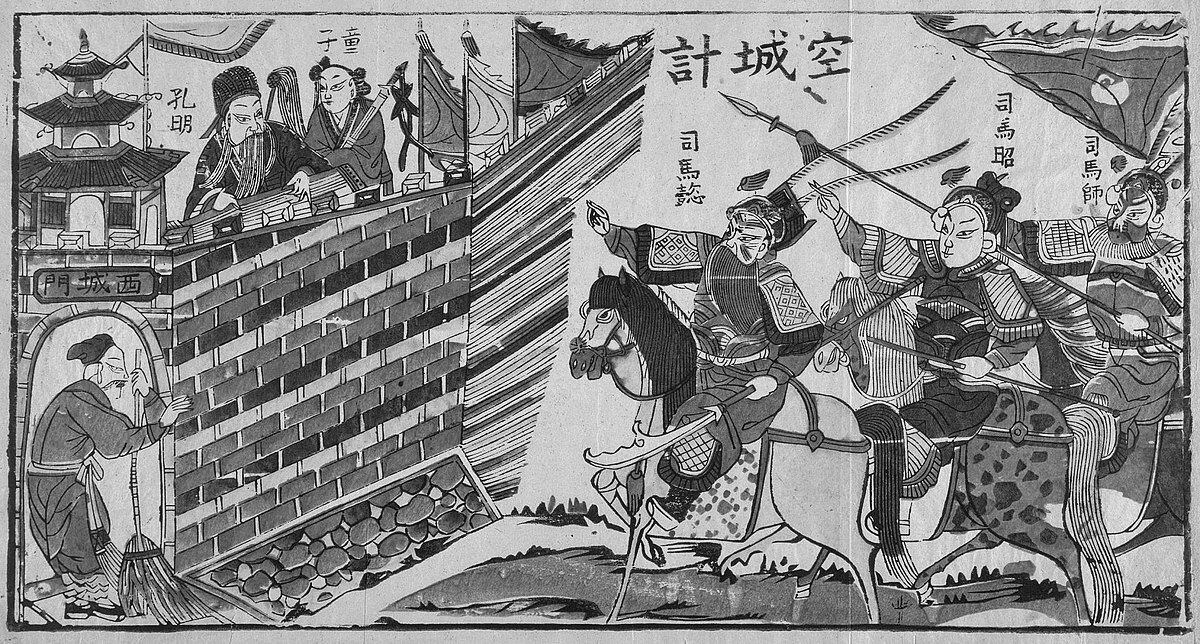Introduction
In the realm of decision-making, our minds can be prone to biases and mental models that influence our choices. One intriguing mental model is the ‘Empty Fort Strategy,’ rooted in ancient Chinese military tactics. It involves creating an illusion of strength and invincibility by deliberately presenting an empty or vulnerable appearance. Understanding this mental model is essential as it reveals how our psychology influences decision-making and the potential pitfalls of falling prey to deceptive appearances.
Defining the ‘Empty Fort Strategy’ and Its Relevance
The ‘Empty Fort Strategy’ entails creating the perception of strength and security despite vulnerability or lack of resources. It is a psychological tactic that manipulates the opponent’s expectations and judgments. This mental model is relevant because it highlights the power of perception, misdirection, and calculated risk-taking in decision-making. It reminds us that appearances can be deceiving and that strategic thinking is essential to navigate complex situations.
Anchored in Human Psychology and Prevalence in Daily Life
The ‘Empty Fort Strategy’ finds its roots in human psychology, specifically in our innate cognitive biases and social dynamics. This mental model manifests in various aspects of our lives. Let’s explore three distinct examples that demonstrate its occurrence in different contexts:
Personal Life Decisions: Jane, a seasoned traveler, often adopts a carefree and confident demeanor even when she is unsure about the outcome. By presenting herself as unfazed and self-assured, she gains the trust and respect of others. However, this can lead to overconfidence and blind optimism, causing her to make impulsive decisions that may not align with her best interests.
Business Scenarios: In a competitive business landscape, companies may strategically project an image of strength and stability to instill confidence in investors, customers, and competitors. However, this can lead to complacency and a failure to address underlying weaknesses or adapt to changing market dynamics, ultimately compromising long-term success.
Public Policy-Making: Governments sometimes employ the ‘Empty Fort Strategy’ by projecting a sense of unity and control in the face of crises or political challenges. While this may temporarily appease the public and maintain stability, it can result in an avoidance of addressing critical issues or implementing necessary reforms, leading to long-term consequences.
Mental Biases and Psychological Underpinnings
Several cognitive biases contribute to the ‘Empty Fort Strategy’ mental model, shaping our decision-making process:
Illusory Superiority: This bias leads individuals to overestimate their abilities, competence, and the effectiveness of their strategies. By succumbing to this bias, individuals may mistakenly believe that their empty fort is impregnable, leading to irrational decisions and overlooking potential vulnerabilities.
Confirmation Bias: The tendency to seek and interpret information that confirms pre-existing beliefs can reinforce the ‘Empty Fort Strategy.’ Individuals selectively focus on evidence that supports their illusion of strength, dismissing contradictory information that could challenge their perception.
Loss Aversion: People have a natural aversion to loss and tend to prioritize preserving their current position rather than taking risks. This bias can perpetuate the ‘Empty Fort Strategy’ as individuals avoid exposing vulnerabilities or making bold moves, fearing potential losses.
Identifying and Avoiding the ‘Empty Fort Strategy’
To avoid succumbing to the ‘Empty Fort Strategy’ mental model, it is crucial to adopt a more nuanced approach to decision-making. Here are practical strategies to consider:
Develop a Balanced Perspective: Cultivate awareness of the potential biases and illusions that can cloud judgment. Seek diverse perspectives and actively challenge your own assumptions to gain a more comprehensive view of the situation.
Embrace Critical Thinking: Engage in thorough analysis and evaluation of information before making decisions. Encourage a culture of constructive dissent and seek out opposing viewpoints to counterbalance any potential illusions of invincibility.
Foster a Culture of Learning: Encourage continuous learning and improvement by embracing feedback, experimentation, and reflection. Promote a growth mindset within yourself and your team, emphasizing adaptability and the willingness to acknowledge and address vulnerabilities.
Stay Vigilant to Changing Contexts: Regularly reassess the dynamics of your environment and market conditions. Avoid complacency by remaining open to new insights and adjusting strategies accordingly. Consider scenario planning to anticipate potential risks and devise proactive measures.
Conclusion
The ‘Empty Fort Strategy’ mental model reminds us that decisions based solely on appearances can be flawed and detrimental. By understanding the psychological underpinnings of this bias, identifying its occurrence in various contexts, and adopting strategies to counteract it, we can make more informed and objective decisions. Awareness, critical thinking, continuous learning, and vigilance to changing circumstances are vital for navigating the complexities of decision-making. By doing so, we can avoid falling into the trap of the ‘Empty Fort Strategy’ and chart a path to sustainable success.
